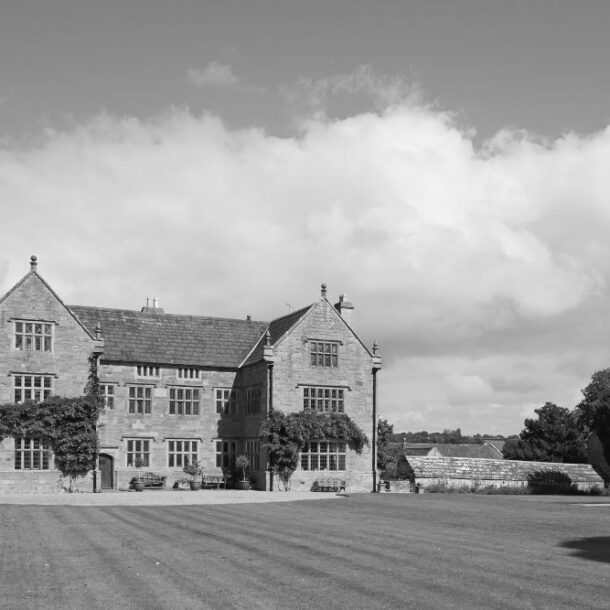

Close

Weetman Pearson, born in 1856, was the oldest of eight children in a middle-class family that owned a construction firm in Yorkshire. From these unlikely beginnings, he became one of the wealthiest men of the British Gilded Age and acquired significant properties in Scotland, including Raemoir House.
Pearson left all formal education behind at only 16 and joined the family business, S. Pearson & Son. He mastered both engineering and business through experience. He revealed an unusual capacity for both the technical and financial side of the business, a rare combination that enabled him to manage large scale infrastructure projects that required creative solutions to maneuver international loans as well as engineering innovation.
At just 19, he toured the United States to find new clients and help expand the company overseas. The country’s economic dynamism appealed to him, marking his later path as an unabashed entrepreneur. Later in his life, members of Britain’s wealthy old guard would deride him as a provincial parvenu “animated with all the avarice of the age.” But unlike some of the great British businessmen of the 19th century, Pearson never aspired to fit into the landed elite or take on its disdain for trade and work. When he did eventually join the peerage, he chose “Do It with Your Might” as his family motto.
Pearson’s grandfather gave him his share in the company when he retired. At just 24, Pearson was at the helm of the company. He fostered it to become one of the major international construction firms of the late 19th century, building the infrastructure of globalization across the world. He left standing memorials to his enterprise, with projects including a dam that changed the course of the Nile in Sudan, the first tunnels to burough below the Hudson to connect Jersey City to Manhattan, and ports in cities from Nova Scotia to Veracruz.
It was Pearson’s work in Mexico that made him one of the wealthiest men of the Gilded Age. He won a contract from the Mexican government to drain the network of lakes and swamps around Mexico City. His work earned him the trust and friendship of Porfirio Diaz, the progress-oriented dictator of Mexico who ruled for over thirty years. He went on to build major railroads in Mexico and won lucrative contracts that advanced Porfirio Diaz’s agenda of modernization and development. Throughout his investment and business in Mexico, he visited annually, spending as much as three months in the country overseeing his varied projects.
In April 1901, Pearson missed a train so he spent the night in Laredo on the U.S.-Mexico border. All around him, he saw the feverish greed and excitement unleashed by oil prospecting in Texas. He was an infrastructure expert with no experience in oil, but he made the very simple—and exceedingly profitable—conjecture that with so much oil in Texas there had to be oil in Mexico. By 1907, he bought over 600,000 acres of Mexican land. At first, his bet seemed to fail miserably. He had built refineries and shipping capacity before he found oil, and had to buy Texas oil at a loss to fulfill his contracts. But then in 1910, he struck oil on an enormous scale. By 1914, Mexico was the third largest oil producing country in the world after only the U.S. and Russia, and Pearson controlled 60% of production. His vertically integrated model ensured maximum profits. But 1910 was also the year when revolution broke out in Mexico. In attempting to protect his business interests, Pearson was accused of anti-revolutionary intervention. In 1919, he sold a majority of his holdings to Shell. His timing, as it turned out, was fortuitous: saltwater infiltrated the largest oil well in Mexico in 1922, and in 1938 the Mexican government nationalized all foreign-owned oil properties.
Pearson’s close relationship with Porfirio Diaz has attracted controversy ever since their first project together. At the time, Mexicans often criticized Porfirio Diaz for despising all things Mexican and blindly aspiring to European approval. Porifirio argued that a country with low literacy rates and high inequality needed administration by an educated, public-minded elite, rather than democracy. His anti-democratic stance and willingness to accept extreme inequality won him the resentment and disapproval of many of his contemporaries as well as future historians. As one contemporary saying went, he was a mother to foreigners—like Whitman Pearson who grew rich building Mexican infrastructure—and a cruel stepmother to his own people. Some historians argue that the reach of British money and companies was a form of neo-imperialism. However, as Paul Garner argues in British Lions and Mexican Eagles, Pearson was a tool for Porfirio Diaz more than he was an agent of British imperialism. He aided Mexican state-building and smoothed access to foreign capital Mexico needed for ambitious infrastructure projects. At home in Britain, where he served first in the House of Commons and later in the House of Lords, his peers referred to him as the “agent for Mexico.”
With an enormous fortune earned abroad, Whitman Pearson became a committed philanthropist and liberal politician at home. When he served in the House of Lords, he urged for age-old pensions, welfare, home rule for Ireland, and female suffrage. Among his many philanthropic gifts was the endowment of a professorship at the University of Leeds to study Spanish and carry on Pearson’s own interest in Hispanic culture into future generations.